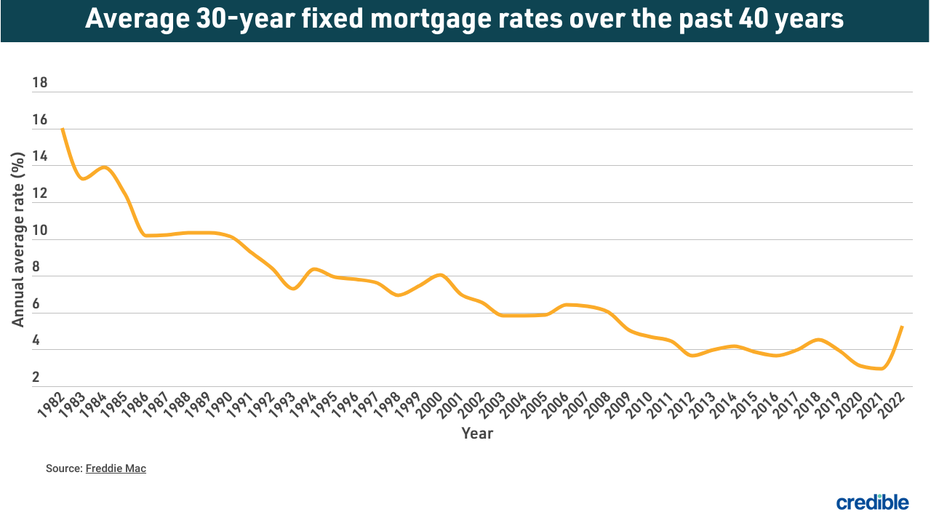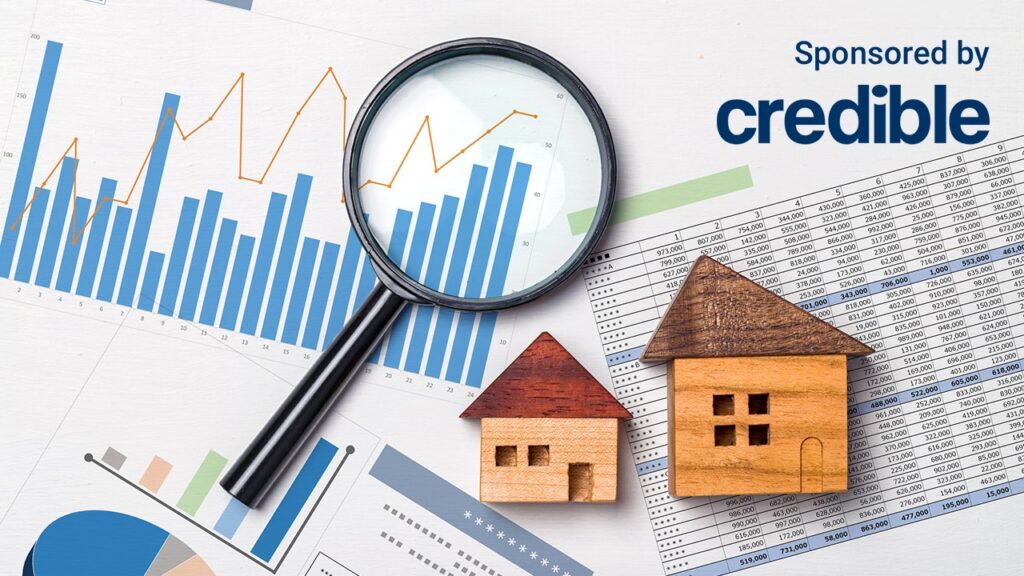Our goal here at Credible Operations, Inc., NMLS Number 1681276, referred to as “Credible” below, is to give you the tools and confidence you need to improve your finances. Although we do promote products from our partner lenders who compensate us for our services, all opinions are our own.
Based on data compiled by Credible, mortgage rates for home purchases have risen for two key rates and held steady for another two since yesterday.
Rates last updated on May 23, 2023. These rates are based on the assumptions shown here. Actual rates may vary. Credible, a personal finance marketplace, has 5,000 Trustpilot reviews with an average star rating of 4.7 (out of a possible 5.0).
What this means: Mortgage rates have held steady for 10- and 30-year terms, keeping them at 6.125% and 6.875%, respectively. Meanwhile, rates for 20-year terms have surged by a half of a percentage point, hitting 6.625%. Additionally, rates for 15-year terms have edged up, bringing the rate to 5.875%. Homebuyers who would like a smaller monthly payment should consider 20-year terms over 30-year terms, as their rates are a quarter of a percentage point lower. Borrowers looking to maximize their interest savings should consider today’s lowest rate, 15-year terms at 5.875%.
To find great mortgage rates, start by using Credible’s secured website, which can show you current mortgage rates from multiple lenders without affecting your credit score. You can also use Credible’s mortgage calculator to estimate your monthly mortgage payments.
Based on data compiled by Credible, mortgage refinance rates have held steady for three key rates and risen for another since yesterday.
Rates last updated on May 23, 2023. These rates are based on the assumptions shown here. Actual rates may vary. With 5,000 reviews, Credible maintains an “excellent” Trustpilot score.
What this means: Mortgage refinance rates have edged up for 10-year terms, bringing the term to 6%. Meanwhile, rates for 30-year terms have held steady and remained as today’s highest term at 6.375%. Rates for 15-year terms have also held steady, and are today’s lowest rate at 5.75%. Rates for 20-year terms have remained unchanged, staying at 6.125%. Borrowers looking to refinance into a smaller monthly payment should consider 20-year terms, as their rates are a quarter of a percentage point lower than those of 30-year terms. Homeowners who would rather save the most on interest should instead consider 15-year terms.
How mortgage rates have changed over time
Today’s mortgage interest rates are well below the highest annual average rate recorded by Freddie Mac — 16.63% in 1981. A year before the COVID-19 pandemic upended economies across the world, the average interest rate for a 30-year fixed-rate mortgage for 2019 was 3.94%. The average rate for 2021 was 2.96%, the lowest annual average in 30 years.
The historic drop in interest rates means homeowners who have mortgages from 2019 and older could potentially realize significant interest savings by refinancing with one of today’s lower interest rates. When considering a mortgage or refinance, it’s important to take into account closing costs such as appraisal, application, origination and attorney’s fees. These factors, in addition to the interest rate and loan amount, all contribute to the cost of a mortgage.

How Credible mortgage rates are calculated
Changing economic conditions, central bank policy decisions, investor sentiment and other factors influence the movement of mortgage rates. Credible average mortgage rates and mortgage refinance rates reported in this article are calculated based on information provided by partner lenders who pay compensation to Credible.
The rates assume a borrower has a 700 credit score and is borrowing a conventional loan for a single-family home that will be their primary residence. The rates also assume no (or very low) discount points and a down payment of 20%.
Credible mortgage rates reported here will only give you an idea of current average rates. The rate you actually receive can vary based on a number of factors.
How much can I borrow for a mortgage?
It’s critical to have an idea of how much you can afford to borrow for a mortgage before you begin home shopping or make an offer on a house.
Generally, the 28/36 rule is a good measure of how much you can afford to borrow without strapping your finances. The rule states that your mortgage payment, including taxes and insurance, shouldn’t be more than 28% of your gross monthly income. And all your debts, including your mortgage and other monthly expenses like car and student loan payments, shouldn’t exceed 36% of your gross monthly income.
For example, if your gross monthly income is $6,250 (annual salary of $75,000), you should be able to afford a monthly payment of $1,750. And your total monthly debt load shouldn’t exceed $2,250.
A general rule of thumb is that you shouldn’t take out a mortgage that’s two to two and half times your gross annual income. So in the above scenario, the maximum you should borrow to buy a house would be $187,500.
Ultimately, lenders determine how much you can afford to borrow by weighing your income, debt, assets, credit and other financial factors.
If you’re trying to find the right mortgage rate, consider using Credible. You can use Credible’s free online tool to easily compare multiple lenders and see prequalified rates in just a few minutes.
Have a finance-related question, but don’t know who to ask? Email The Credible Money Expert at [email protected] and your question might be answered by Credible in our Money Expert column.
Read the full article here










